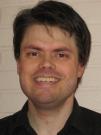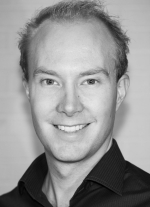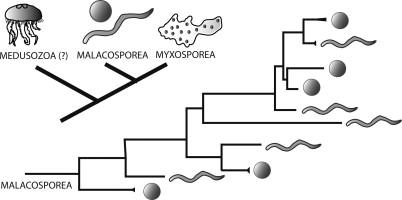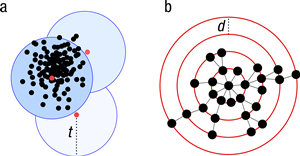Previous events - Page 257
This week we will read an a bit more ecological paper on hybridization and evolutionary outcomes entitled "Hierarchical behaviour, habitat use and species size differences shape evolutionary outcomes of hybridization in a coral reef fish" by Gainsford and colleagues to be published in Journal of Evolutionary Biology. Please note that the meeting will take place at a different location this time!
Alfons van Daele, University of Leuven (Belgium), will give a talk with title: Separability idempotents and quantum groupoids
Andrea Riebler ( Dept. of math., NTNU) gives a seminar in room 107, 1st floor N.H. Abels House at 15:15 December 2nd: Projecting the future burden of cancer: Bayesian APC analysis made simple.
Modular forms are certain complex-analytic functions on the upper-half plane. They can also be interpreted as giving linear-algebraic invariants of elliptic curves, perhaps equipped with some extra structure, and in this way they reveal their algebraic-geometric nature. One of the most fundamental modular forms is the Dedekind eta function. However, it seems that only recently has it been pinned down precisely what extra structure on an elliptic curve is needed to define eta. Namely, Deligne was able to express this extra structure in terms of the 2- and 3-power torsion of the elliptic curve. Deligne's proof, apparently, is computational. In this talk I'll describe a conjectural reinterpretation of Deligne's result, together with some supporting results and a hint at a possible conceptual proof. The reinterpretation is homotopy theoretic, the key being to think of an elliptic curve as giving a class in framed cobordism. This directly connects the number "24" which often appears in the study of eta to the 3rd stable stem in topology.
Friday seminar by Arnaud Le Rouzic. NEW TIME: 12.15
Welcome to the GeoHyd Lunch Seminar on Friday 28 November @12:15 in AUD 1 in the Geology building.
Master i farmasi Eirik Johansson Solum ved Farmasøytisk institutt vil forsvare sin avhandling for graden ph.d: Synthesis and Biological Evaluations of Analogues of 2-Methoxyestradiol: New Anti-cancer Agents.
Pål Kristian Eriksen - Institutt for lingvistiske og nordiske studier, UiO
This week we'll be learning when species richness should be energy limited (I think the right answer is "sometimes"), and more interestingly; how would we know? An idea and perspective paper by Hurlbert and Stegen in Ecology Letters 2014.
Same time, same place, same people. Welcome!
This week we’ll move away from the opisthokonts, and will talk about a group of rhizarian parasites; the phytomyxids.
Johannes Kleppe, Høgskolen i Buskerud og Vestfold, gives the Seminar in Algebra and Algebraic Geometry:
Abelian varieties XII
Jonas Karstensen at the Department of Geosciences will be defending his dissertation: Attribution of emissions and temperature change to producing and consuming regions and sectors
The effect of intermittent hypoxia on Hypoxia inducible factor 1α in rat skeletal muscle.
Doctoral candidate Jonas Karstensen at the Department of Geosciences will give a trial lecture on the given topic: Climate sensitivity
Jesús Zavala Franco, University of Copenhagen [slides]
Although there is substantial gravitational evidence for the existence of dark matter, its nature as a new particle beyond the Standard Model remains one of the biggest mysteries in modern astrophysics. The favourite theoretical model, Cold Dark Matter (CDM), assumes that non-gravitational dark matter interactions are irrelevant for galaxy formation and evolution.
Surprisingly, there is no strong evidence for the CDM hypothesis. Current astronomical observations allow significant departures that have a relevant impact on our understanding of how galaxies form and evolve. Moreover, the observed properties of the smallest galaxies have been consistently in conflict with the predictions of the CDM model.
In this talk, I will argue that to explain galaxy formation and evolution in the broadest sense, an effective dark matter theory must contain a wider range of dark matter particle physics without spoiling the success of CDM in reproducing the large-scale structure of the Universe, while addressing its outstanding challenges at the scales of individual galaxies.
Bank et al. (2014) looks like the perfect paper for a TGAC discussion: Highly relevant (arguing that selective sweep detection needs to take demography and background selection into account), brand new (currently in press corrected proof), and short (7 pages). So let's have a TGAC meeting on Tuesday, at 1 pm as usual.
Welcome to the GeoHyd Lunch Seminar on Friday 21 November @12:15 in AUD 1 in the Geology building.
Hans Olav Melberg, Associate Professor - Department of Health Management and Health Economics, UiO
This week we'll be discussing a paper by Brockhurst and co-workers in Proceedings B: Running with the Red Queen: the role of biotic conflicts in evolution
At the parasite journal club this week we will try again to discuss the myxozoans, a weird group of parasites within the opisthokonts. They are a strange group of microscopic sized metazoans related to the Cnidaria, and are found in aquatic habitats where they act as parasites of fish, amphibians, reptiles and rarely invertebrates.
I will discuss joint work in progress with David Gepner, computing the ring of endomorphisms of the equivariant motivic sphere spectrum, for a finite group. The result is a combination of the endomorphism ring of the equivariant topological sphere spectrum (which equals the Burnside ring by a result of Segal) and that of the motivic sphere spectrum (which equals the Grothendieck-Witt ring of quadratic forms by a result of Morel). This computation is a corollary of a tom Dieck style splitting for certain equivariant motivic homotopy groups.
The paper we will discuss on Thursday will be presented by Håvard.
SWARM: robust and fast clustering method for amplicon-based studies
Martijn Caspers (Münster) will give a talk with title: The Haagerup property for arbitrary von Neumann algebras
Abstract: The Haagerup property is an approximation property for both groups and operator algebras that has important applications in for example the Baum-Connes conjecture or von Neumann algebra theory. In this talk we show that the Haagerup property is an intrinsic invariant of an arbitrary von Neumann algebra. We also discuss stability properties of the Haagerup property under constructions as free products, graph products and crossed products. Finally we discuss alternative characterizations in terms of the existence of suitable quadratic forms.
”Sperm Morphology, Sperm Motility and Paternity Success in the Bluethroat (Luscinia s. svecica)”




